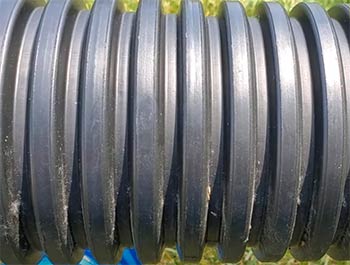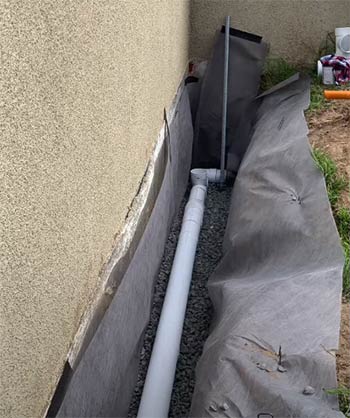Whether you are trying to get a new drainage pipe installed into your home or just looking to replace your existing one, a common dilemma is if you should go for a solid or perforated pipe.
Whilst both have their own merits; it is necessary to know them and their differences before you make your purchase.
The internet is full of scattered information about these pipes. But here, we will be giving you an elaborate and precise comparison to help you understand them better.
So we suggest you stick around!
A Quick Comparison Table
Now that we have learned about the basics of both these products let us see a concise comparison between them in the chart below.
We are comparing them based on a variety of factors.
| Factor | Perforated Pipe | Solid Pipe |
| Holes | Yes | No |
| Durability | Lower than Solid Pipes | Higher than Perforated Pipes |
| Flexibility | Higher than Solid Pipes | Lower than Perforated Pipes |
| Price | Lower than Solid Pipes | Higher than Perforated Pipes |
| Protection Against Penetration | Low | High |
| Installation | Easier than Solid Pipes | Harder than Perforated Pipes |
| Size Variation | Low | High |
| Water Flow | Slower than Solid Pipes | Faster than Perforated Pipes |
Comparison Between Perforated And Solid Pipes

This chart gives you a concise overview of the differences between the two. As well as that, this chart can work as a table for assessing the merits and emirates of each pipe.
It shall also help you evaluate which pipe best suits the needs of your bathroom’s drainage facility.
Keep in mind that the environment you live in will also be a key factor in determining which pipe is better suited to your needs.
Now that we have seen a short comparison let us get into the details. We will be breaking down each factor to give you an elaborate understanding of these two products.
- Holes
When it comes to the hole, the names of these products are pretty self-explanatory. Perforated pipes have tiny holes, or as the name suggests – perforation along their body.
Some even have slits. This is to expel the water out as the water flows through. Solid pipes, on the contrary, are smooth, and there is no perforation on them.
- Durability
Durability is often the deal-breaker when it comes to purchasing pipes. As both these pipes will be underground, durability is paramount.
When it comes to durability, solid pipes offer greater rigidity than perforated pipes. For pipes, durability is measured in terms of how well they fare against clogs and penetration of roots underground.
Perforated pipes have lower durability due to the presence of holes along their body. This makes these pipes susceptible to clogs and allows roots to penetrate their body through those holes.
On the flip side, solid pipes have a much more consistent body. Thus, the penetration of roots is out of the question.
But this does not mean that perforated pipes have no durability at all. They are just less durable. Solid pipes are in general more long-lasting than perforated pipes due to their higher durability.
- Flexibility

The next point of contention is flexibility. In regards to pipes, flexibility can be deemed as the property of the pipes to withstand various types of conditions.
That also includes adapting to transitioning conditions, such as shifting from one season to another.
When it comes to such adaptability, perforated pipes are better at weathering storms than solid pipes.
- Clogs And Maintenance
As we have mentioned in a point beforehand, perforated pipes are more susceptible to clogs. This makes their maintenance a little more difficult than that of solid pipes.
Whilst clogs also might occur in solid pipes, they are easier to deal with in comparison.
- Water Flow
Water flow in perforated pipes is slower due to the presence of the pores, which leads to a higher potential for debris getting stuck.
As solid pipes are smooth, water flow is much faster.
- Size Variation
If you go the market or even scour through online pages, you will see that solid pipes offer higher variation in sizes.
Thus it makes them more versatile when it comes to different stagnant environments.
- Price
A solid pipe will cost you more than a perforated pipe. This is primarily because solid pipes have greater variation in sizes.
Depending on the size of your project, you could be spending a significant amount of more money on installing a solid pipe.
- Installation
Installation of solid pipes is much more complex than that of perforated pipes.
Before we end the discussion, let us first know about these two types of drainage pipes in more detail.
Perforated Drainage Pipes

Perforated drainage pipes are pipes with very miniature holes or slots on them. These holes allow water to enter or exit as it moves along the pipe.
Such pipes are very useful for underground drainage systems since they absorb water and, at the same time, drain the water out of the way.
These pipes can be made out of a variety of materials. The materials include PVC, clay, cement, and iron. They are very flexible because they are lightweight.
Flexibility is a very crucial feature as perforated pipes are mostly used underground. Rigid pipes might crack under the pressure of changing seasons.
But Perforated pipes are more suited to weather storms and changing conditions. Next, we will look into the different types of perforated drainage pipes.
Types of Perforated Pipes
There are two main types of Perforated drainage pipes. People choose from the available alternatives based on what types of conditions surround them. These pipes are:
- Plastic Drainage Pipe
These drainage pipes have holes at the top of them. Water enters through the opening at the top and then enters the pipe through the holes.
Plastic drainage pipes are rigid but not that flexible. Thus, they might succumb to changing seasons when placed underground.
- Corrugated Drainage Pipes
Corrugated pipes are black in color, with slits present all around the pipe. This type of pipe is very flexible.
The idea behind the design is that water will enter from the top of the pipe, but if the water saturates the ground, then it can enter from beneath as well.
Many people recommend using this pipe due to its higher flexibility.
Next, we will be looking into another type of pipe – Solid Pipes. This is a very common type of pipe used by many homeowners.
Solid Pipes

These types of pipes are used widely for sewers, as well as for plumbing needs.
They are available in a variety of lengths, sizes, and diameters.
Solid Pipes have higher durability than corrugated pipes.
They cannot be penetrated easily when they are buried underground. You can also clean them out very easily.
This is because they have very smooth walls, which do not have any pores.
As a result, it is relatively easy to remove clogs and debris. They also have a higher lifespan than perforated pipes.
Although they have a higher lifespan, solid pipes are very difficult to install.
Due to their variation in sizes, you could also end up paying more for them.
Final Words
What pipe you will purchase is entirely upto you at the end of the day. Assess your surroundings as well as your bathroom, and do proper market research before making your purchase decision.
We hope our perforated Drain Pipe vs. Solid comparison will come in handy when you are making your decision.
Happy Pipe Shopping!
